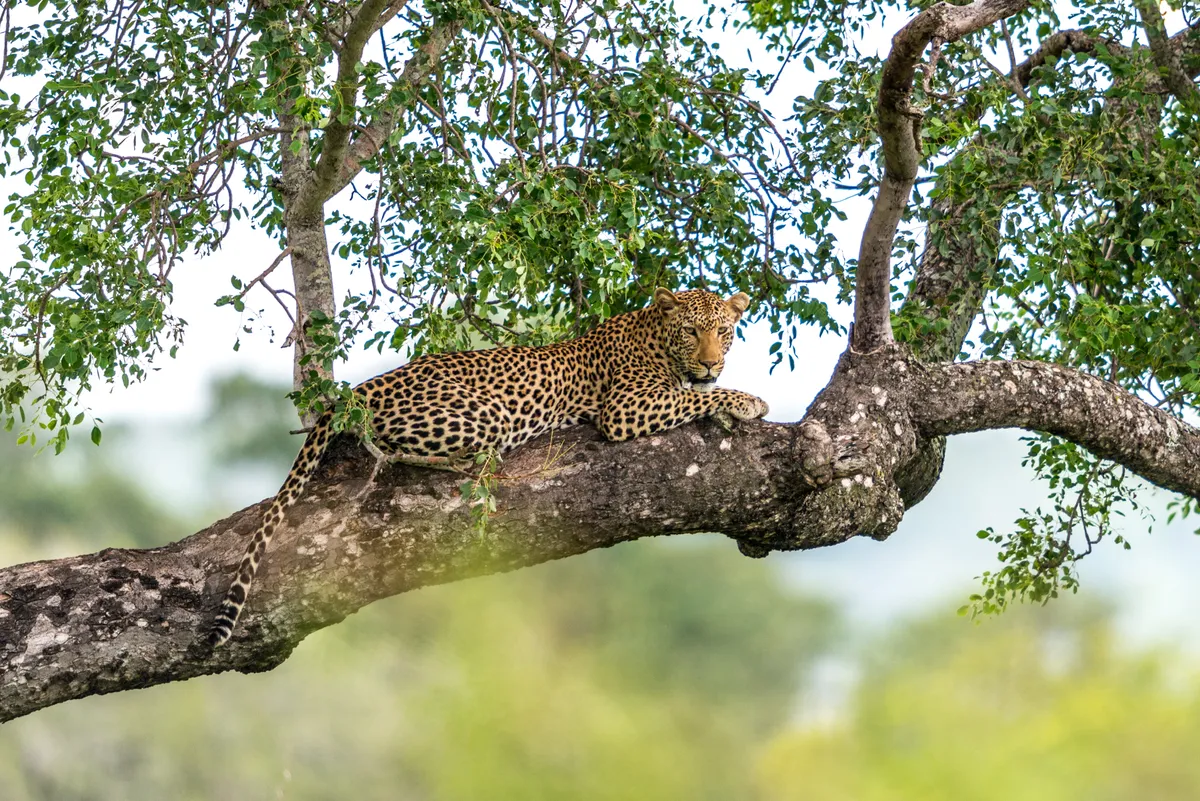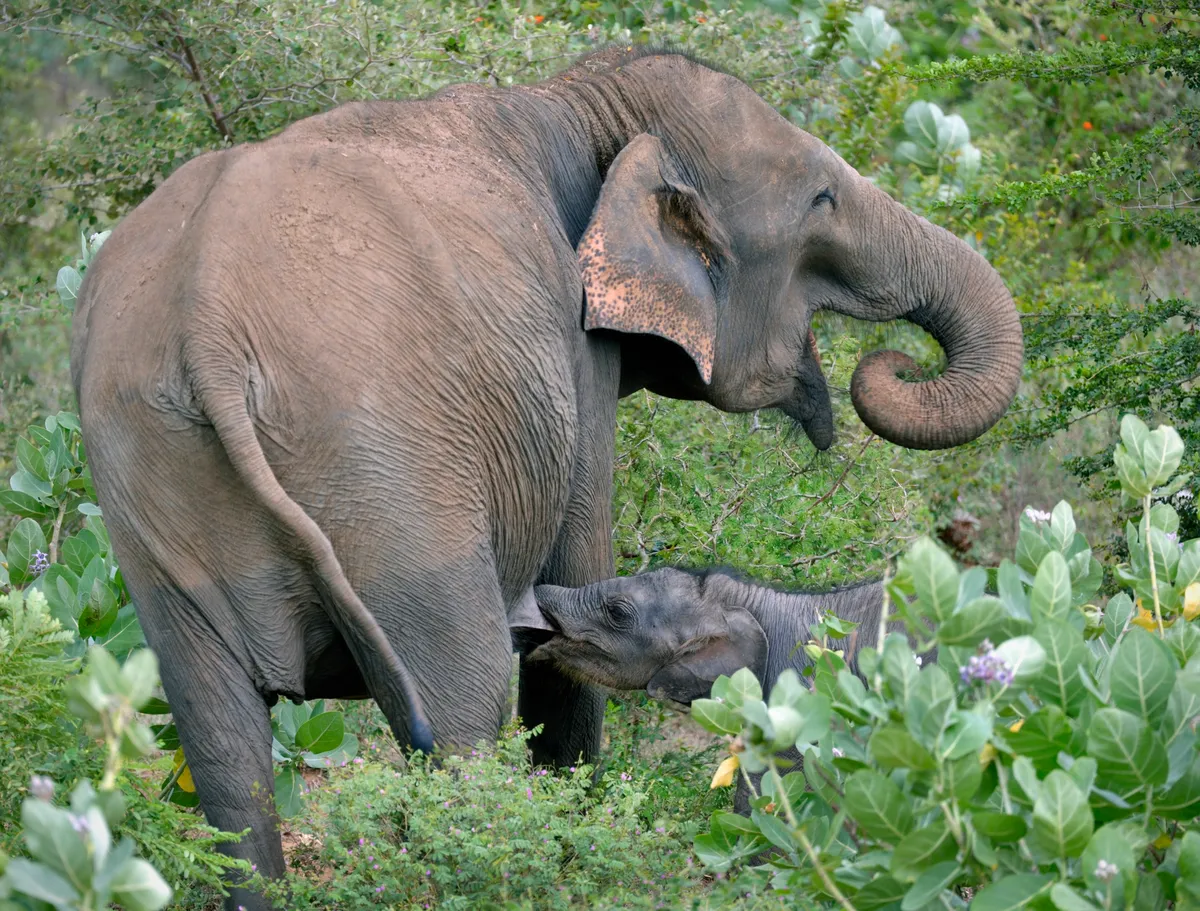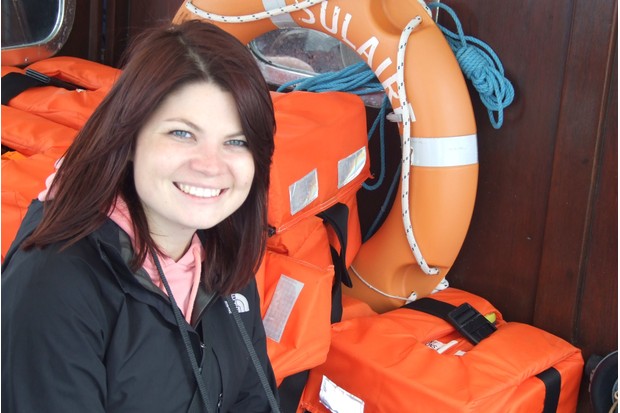The vast reserve – with lowland woodland, grassland, lakes and lagoons – is home to 44 mammal species and 215 bird species. The park borders the Indian Ocean and contains pilgrimage sites, including Sithulpawwa, an ancient Buddhist monastery.
1
Sri Lankan leopard, Panthera pardus kotiya

Yala National Park’s leopard density is higher than anywhere else on Earth (2.5 every square mile). These ‘lords of the jungle’, as they are known, can be seen in scrub or lowlands, especially in the morning or at dusk. They mainly hunt deer and wild boar.
2
Sri Lankan Elephant, Elephas maximus maximus

A sizeable population – about 300 to 350 – of Sri Lankan elephants (Asian elephant subspecies) resides in Yala, which is a very important site for their conservation. The mammals can be spotted roaming or bathing in lagoons and waterholes.
3
Other highlights

There is wealth of wildlife at Yala for visitors to enjoy, including sloth bears, crocodiles, wild peacocks, blue-tailed bee-eaters and monitor lizards. Look out for endemic bird species, including the Sri Lanka grey hornbill and black-capped bulbul.
Key facts
- Area:1.268km2
- Zones (blocks):5
- Visitors: over 650,000 per year
When to go
In the drier months (February to June) low water levels bring animals out into the open. The park is closed annually from 1 September to 15 October.
